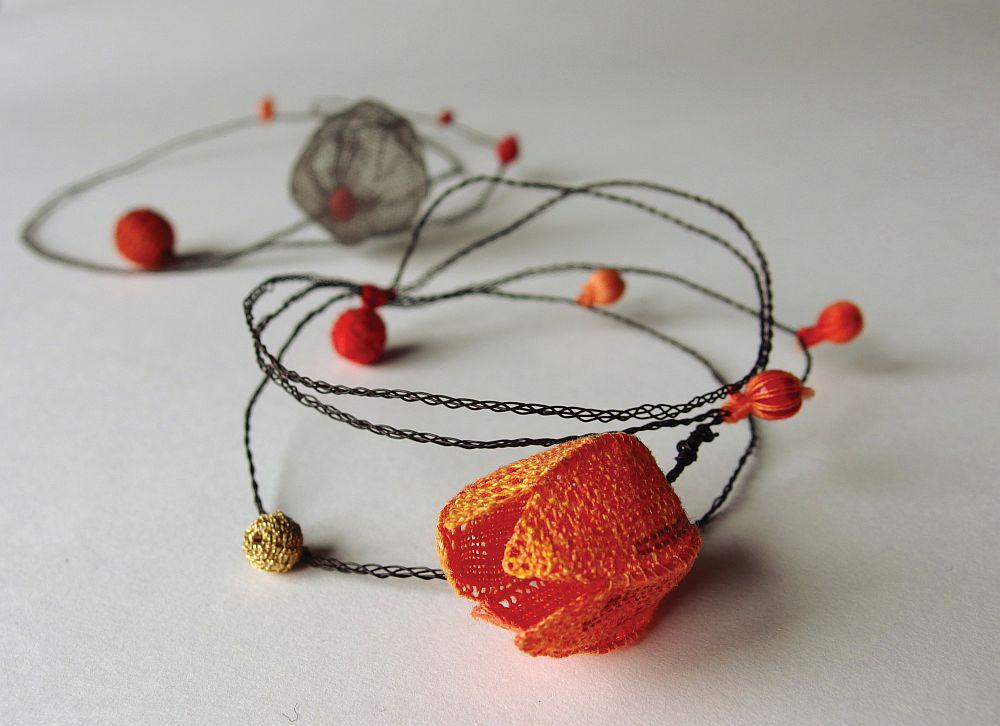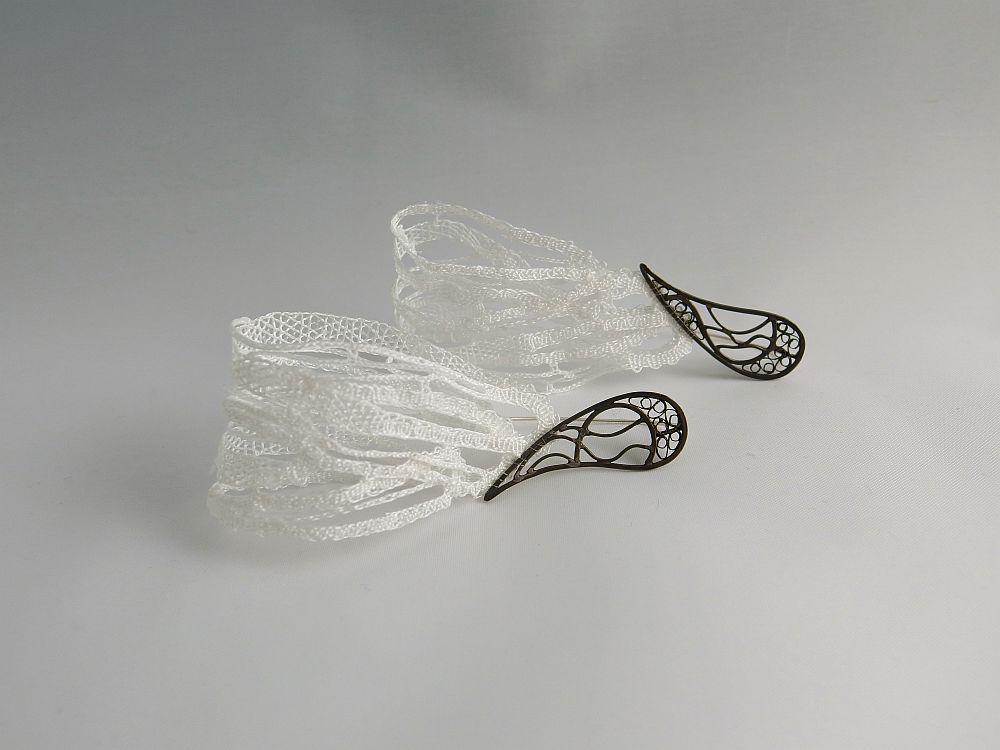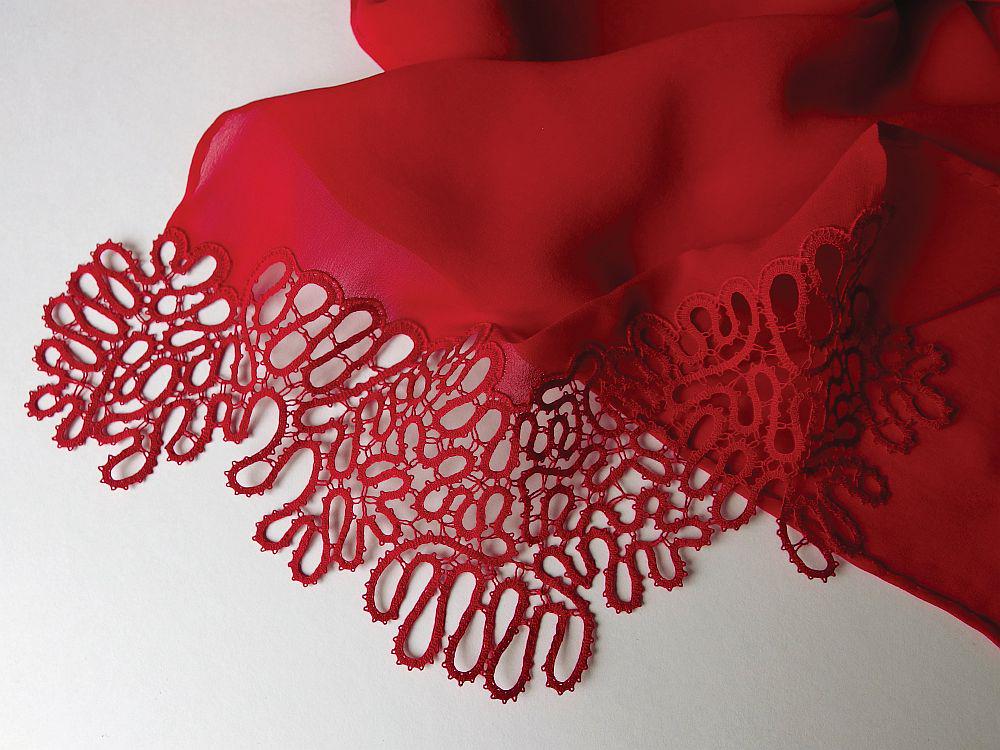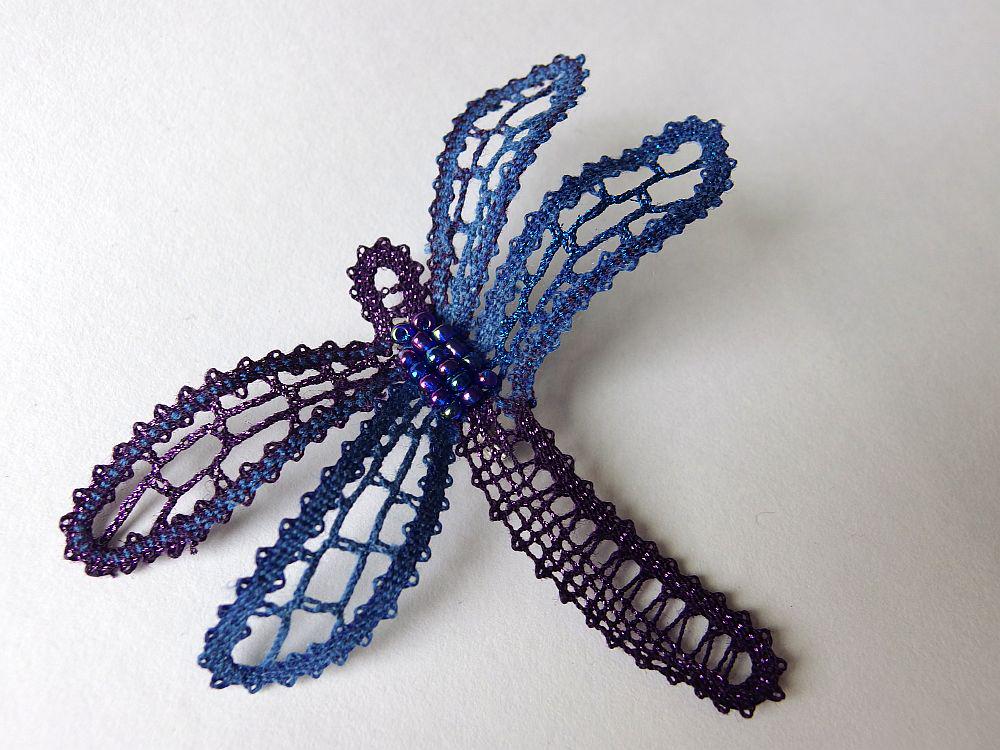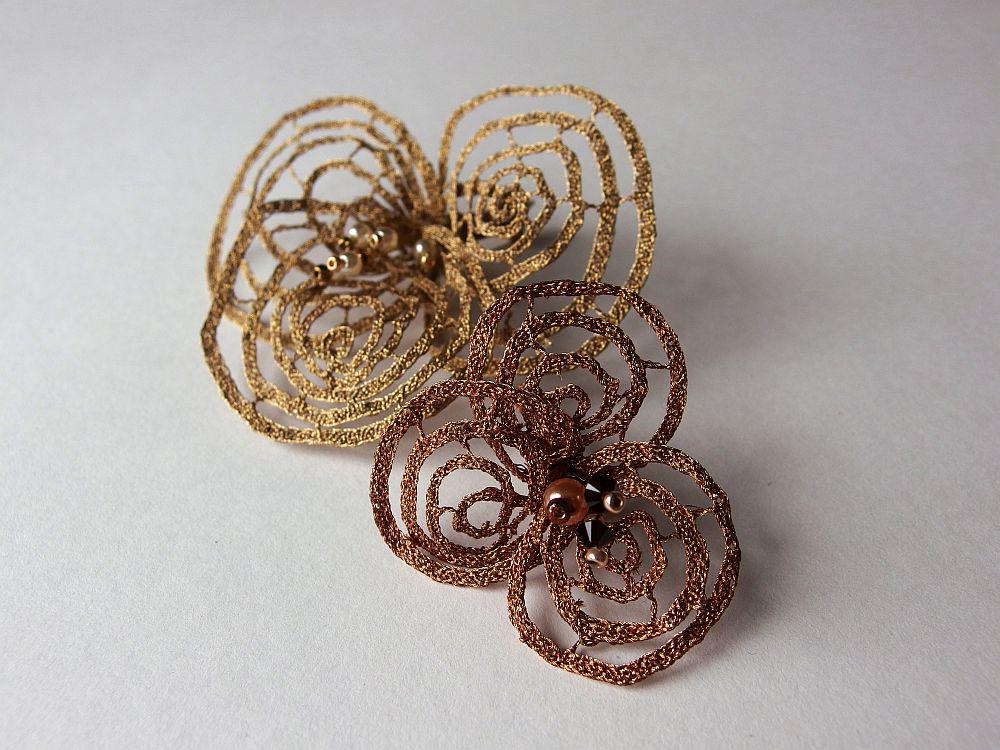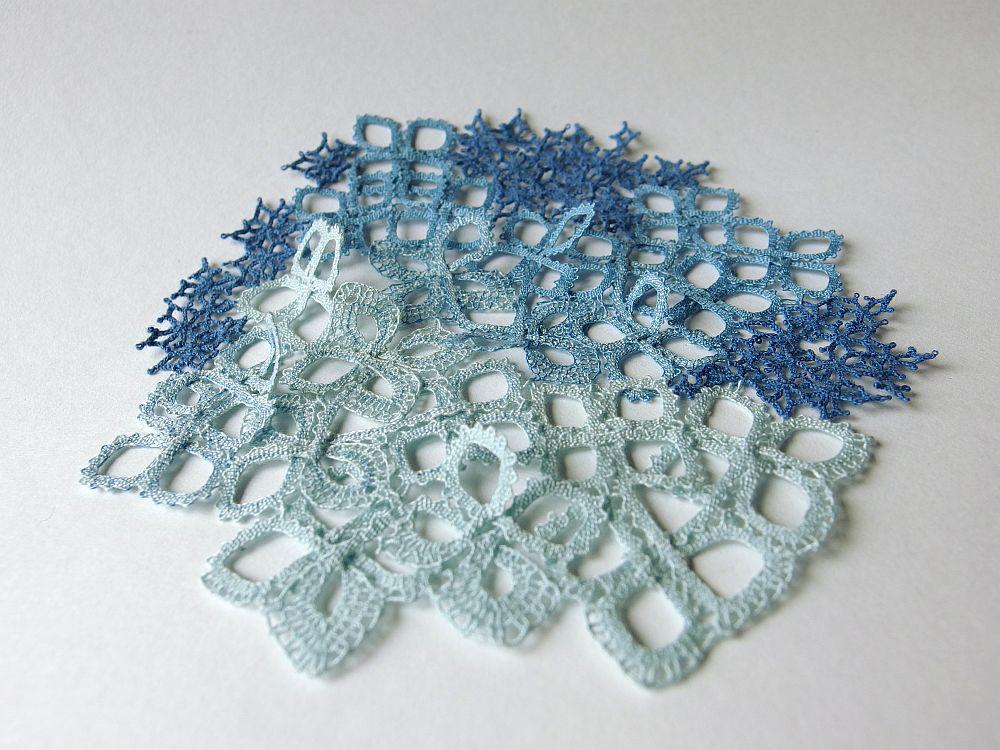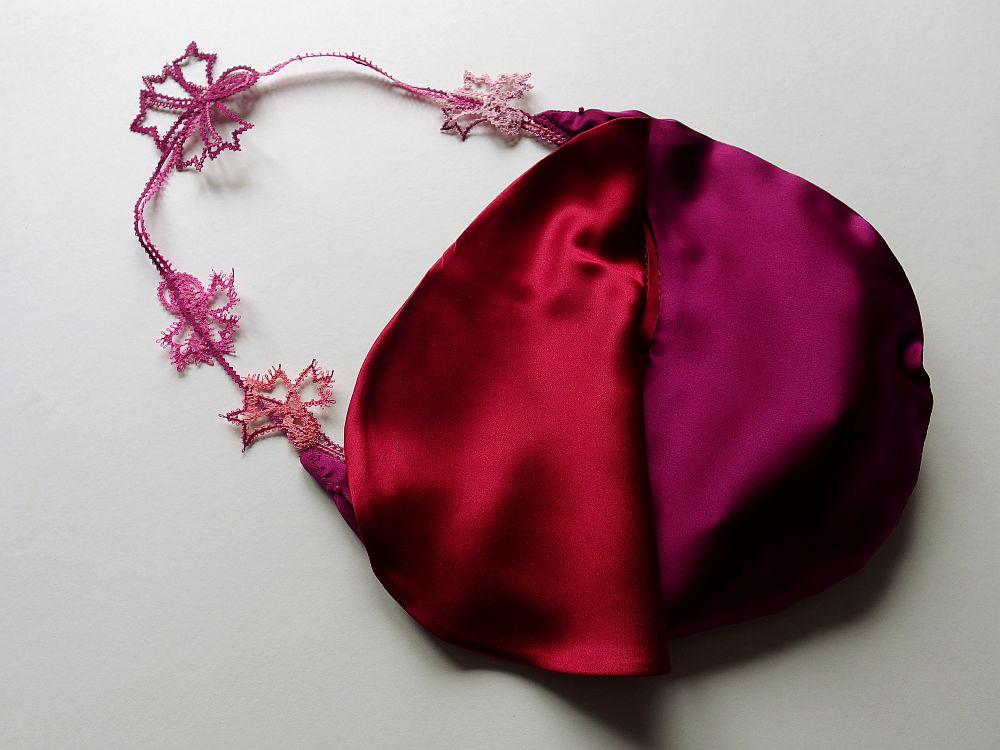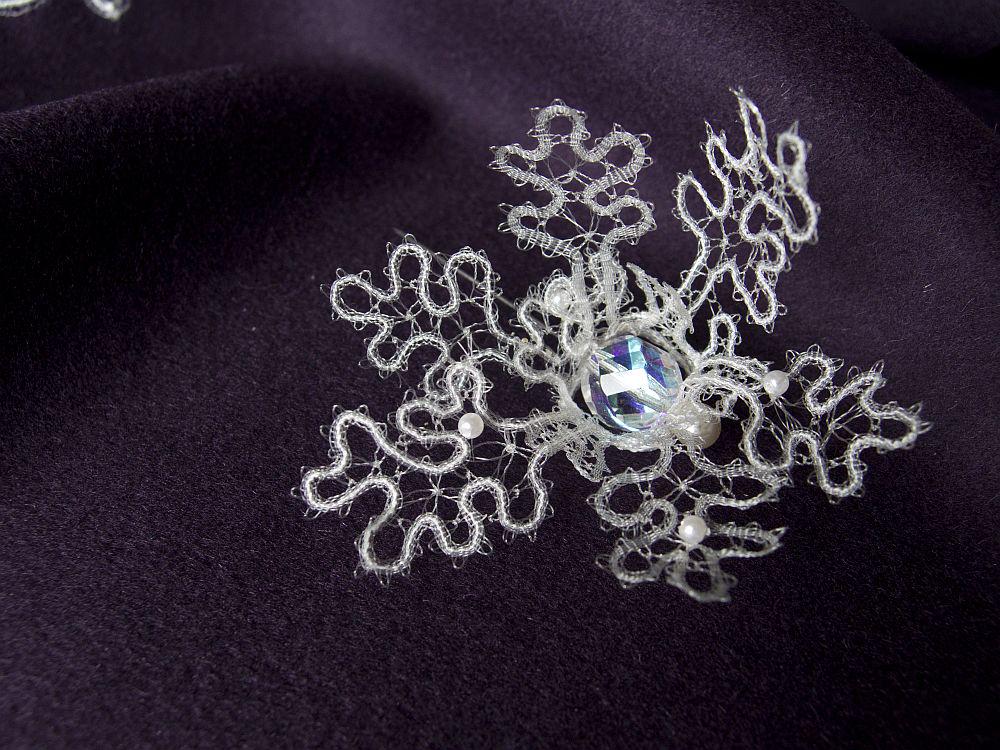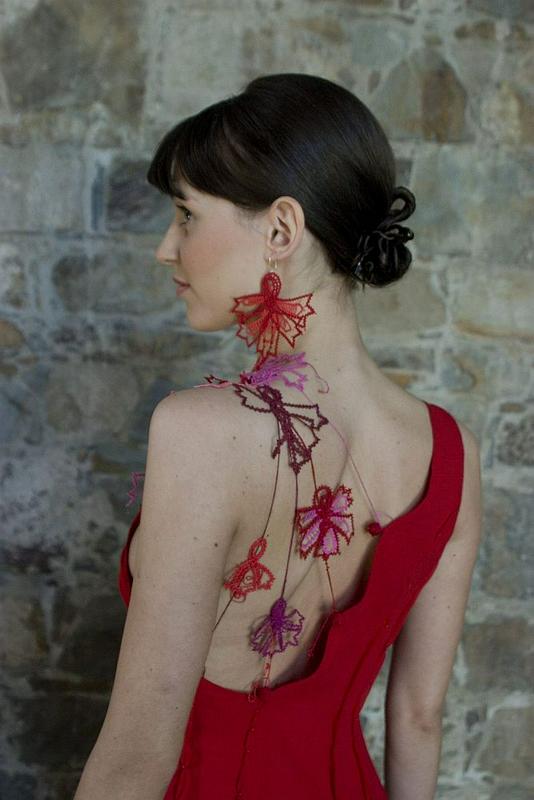
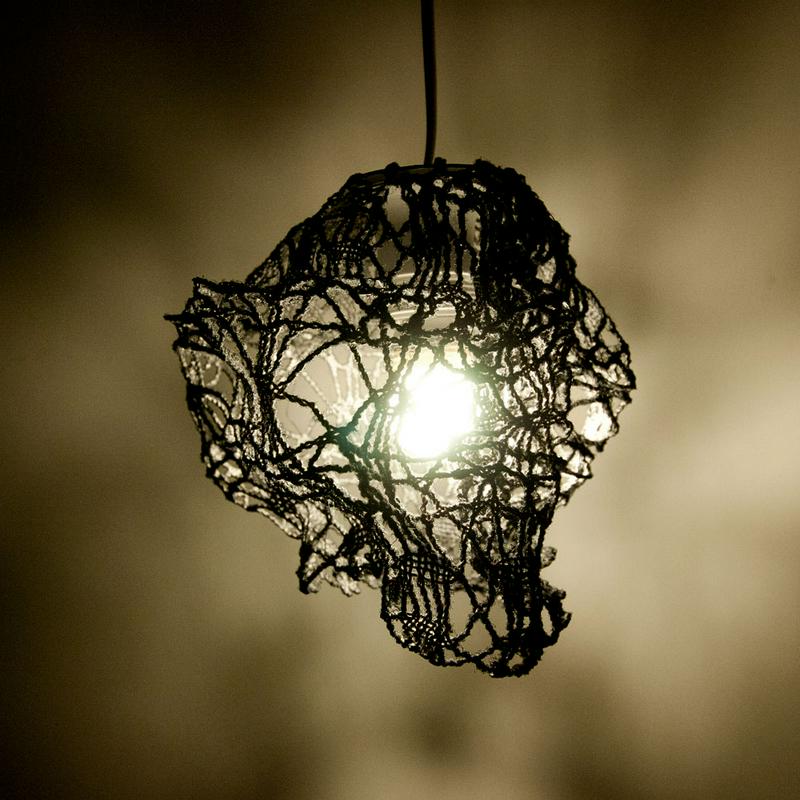
Tina Koder Kajzer and Manca Ahlin are modern artists who have been making lace since their early childhood. They come respectively from the two birthplaces of lacemaking in Slovenia, Idrija and Žiri.
Signature jewellery and accessories
Tina Koder Kajzer has devoted her life to making lace. Lace is art, a beautiful adornment. "Lace is like a gentle whisper - you can hear it but to really understand it, you have to come closer." Her signature lace evolves from traditional Idrija bobbin lace-making, in which she excels. Her knowledge of textile and clothes design also helps: "It helps me make three-dimensional lace from two-dimensional lace." Her red scarf with lace enchanted Hillary Clinton, who had accompanied her husband, American President Bill Clinton, on a state visit to Slovenia.
But Tina's speciality is designing lace jewellery, which she does in cooperation with Biljana Klekačkoska, a designer from Macedonia. Their jewellery combines Idrija lace and filigree. "We combine lace and silver thread," says Tina. Her lace is already shown on catwalks and beauty pageants.
And the work of the young artist has already been widely recognized and has won numerous awards, both at home and abroad. She won the first prize for her knitted scarf with Idrija lace applications, made of sheep’s wool, under the European project Lanatura which had designers from Slovenia competing with those from Italy. Her Idrija lace necklace is displayed in the Silk Museum in Italy. She says, however, that she “cherishes most the Zlata Vitica, the award conferred on her by Slovenia's Chamber of Crafts".
The difference between kitsch and quality design is in the combining of one's vision with knowledge. Tina gets the inspiration for her designer lace from life itself: admiration of nature, emotions, and events. Her small shop is a luxurious bliss: butterflies and dragonflies weave dreams with their wings, a fragrance of carnations floats in the air, and showcases can be seen through a curtain made of lace snowflakes.
Natural rope screen
Manca Ahlin is an architect who lives in New York and has been working with the design studio Archipelagos for the last six years. She has designed a lace screen for a Mediterranean restaurant in New York. The screen is a piece of lace eleven metres long and three metres wide, made of natural rope. "This is my best personal project so far, I designed it completely by myself" Manca says.
The project of revamping the restaurant was led by her colleague, while Manca was asked to create an interior design installation. "As this was something completely new, I first made an actual-size pattern with rope, so that the restaurant owner could get the idea what the final product would be. He was enthusiastic," she says, explaining the creative process.
The lace screen is actually made in a very traditional two-dimensional technique, and if scaled down to the normal thread lace dimensions it would be difficult to notice a difference. "I actually braided the heavy ropes as I would have done with bobbins", she explains, joking: "It was physically very demanding, so I had no need to go to the gym." The theme – grapes and olives – of the lace reflects the type of restaurant, which offers Mediterranean cuisine, and echoes the name of the restaurant’s location: Flower District in Chelsea. "I chose hemp rope partly because of the Mediterranean atmosphere of the place and with the history of seafaring in mind, and partly because I wanted to use easy-care rope made of natural fibres."
When asked whether the customers know that the screen of rope lace was made by a Slovenian she explains that "the staff know my work very well, as the screen was not made in the blink of an eye. I worked on it for a whole month. And the owner is also very keen to explain to his customers the story of the screen's making. It is a fact that this is a signature design and is, even by New York standards, something unequalled, fresh and new." It is no surprise then that Manca has already got a new contract: "The Stix Restaurant, set to be opened at a different location, does not want a replica of the screen, but a lace pattern application," Manca explains.
Lace is Slovenia's identity symbol
Lace, be it from Idrija, Žiri or elsewhere, is one of the most recognisable symbols of Slovenia's identity. There are more than one hundred lace-maker societies, sections and groups active in Slovenia, not only in the two best known centres, Idrija and Žiri, but also in Železniki. The mass embracing of lacemaking and the passing on of knowledge to young generations ensures the preservation of this traditional craftsmanship. Lace has always been a luxury item carrying a deep communicative value. Nowadays flax or cotton threads are no longer the only materials from which lace-makers create their masterpieces. Just as Tina Koder Gajzer and Manca Ahlin do, each with their own interpretation of the rich and luxurious lace from Slovenia.
Tanja Glogovčan, SINFO




















































